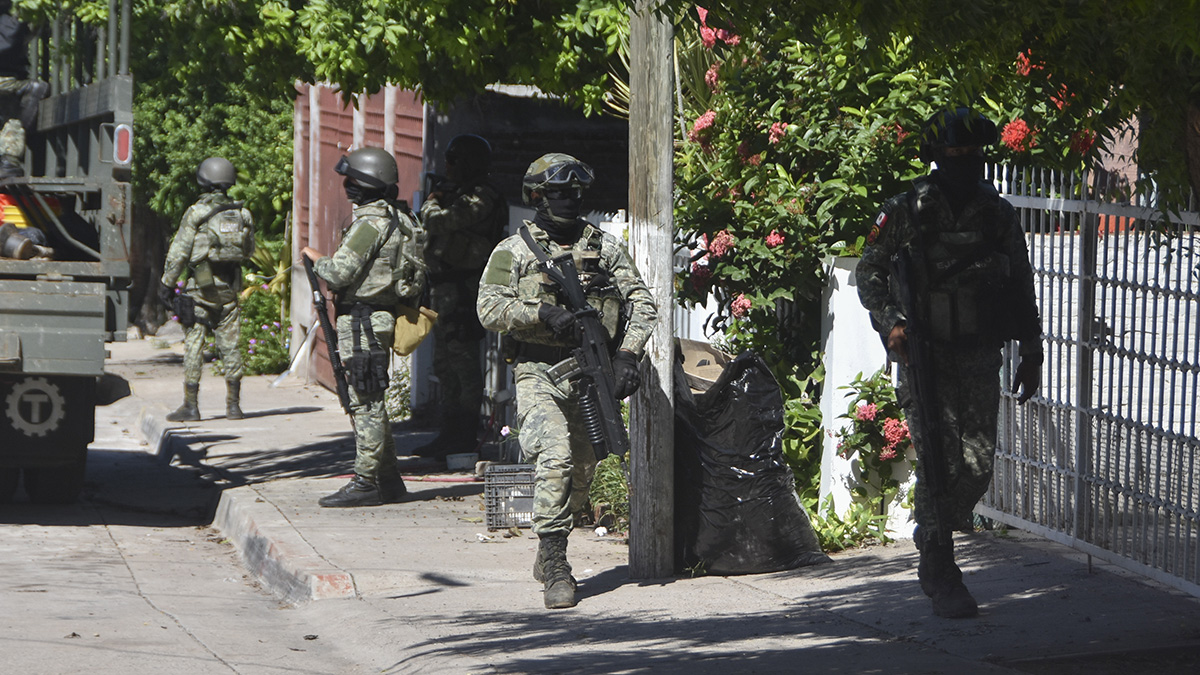The state of education in Sinaloa, Mexico, has been thrust into the spotlight due to an alarming and unprecedented decision. A primary school in the region has been repurposed into a military outpost, a development that has left local communities grappling with its long-term consequences. This bold move raises critical questions about safety, education access, and the socio-political landscape of one of Mexico’s most troubled regions. As schools face a new reality, the ripple effects extend far beyond the walls of the classroom, creating a perfect storm of challenges for students, educators, and families alike.
The Transformation of Sinaloa’s Education System
In recent weeks, a primary school in the Sinaloa municipality of Mexico has been repurposed into a military base in response to escalating violence in the region. This decision marks an extraordinary shift, where educational facilities are being co-opted for military purposes due to the escalating cartel violence that has plagued the area for years.
The school, which had been serving hundreds of local children, is now empty, its classrooms deserted, and its halls silent. In place of students, military personnel have taken up residence, with the building now serving as a command center in the fight against drug cartels and organized crime syndicates.
The Immediate Impact on Students and Families
For the students, this transformation has meant more than just an interruption in their daily routines. Schools in rural and underserved areas of Mexico have always been fragile institutions, and this unprecedented decision has forced families to make difficult choices. Parents who once relied on public education are now faced with the uncertainty of how to continue their children’s education amid an ongoing security crisis. For many, the options are limited:
- Return to remote learning, if available
- Seek out alternative educational institutions, which may not be within easy reach
- Face the potential dangers of travelling to other schools in conflict-ridden areas
In Sinaloa, where violence and insecurity have escalated over the past decade, these decisions are not just about logistics but survival. Many families have expressed fears for their children’s safety, with the surrounding communities increasingly becoming battlegrounds between rival cartels and the state military. Reports of shootings near schools, the presence of gang members, and the kidnapping of students for ransom have created an atmosphere of fear and uncertainty.
Escalating Violence in Sinaloa
The decision to turn a primary school into a military outpost is a symptom of the broader security crisis in Sinaloa. Historically, the state has been one of the epicenters of drug cartels in Mexico, with the infamous Sinaloa Cartel—once led by Joaquín “El Chapo” Guzmán—dominating the region. Despite the extradition of Guzmán to the U.S. and his conviction, the cartel’s influence has not waned. Rather, it has splintered, with multiple factions vying for control of drug routes and illicit businesses.
In the face of this fragmentation, the Mexican government has ramped up its military presence in the region. However, this has led to a paradox: while the military seeks to curb violence, it has inadvertently exacerbated tensions, often leading to more violent confrontations between cartels and the armed forces. Schools, which are meant to be safe spaces for children, have become inadvertent targets of these battles. As a result, many educational institutions in Sinaloa have been forced to close temporarily or repurpose their structures for military use.
The Military’s Role in Civilian Spaces
While the involvement of the military in educational spaces may seem like a drastic measure, it is part of a broader strategy known as “militarization” that has been implemented by the Mexican government in response to the growing violence in the country. This policy has seen the military take on roles traditionally reserved for civilian authorities, including law enforcement, security, and even education.
Advocates of militarization argue that it is necessary to curb the influence of organized crime and restore order in regions like Sinaloa. However, critics contend that the militarization of public spaces, including schools, only exacerbates the underlying issues of violence and undermines civilian governance. By placing schools under military control, the government risks normalizing a climate of fear, making it harder for civilians, particularly students and teachers, to feel safe in their own communities.
The Broader Impact on Education in Sinaloa
The decision to turn schools into military outposts is not isolated. Across Mexico, the quality of education has been severely impacted by violence and the presence of cartels. Many rural schools in Sinaloa and other parts of Mexico operate in unsafe conditions, where teachers and students alike are subject to intimidation and threats. As a result, many educators have chosen to leave the profession, further exacerbating the already strained education system.
According to the Mexican government’s own reports, nearly 30% of teachers in the most conflict-ridden states, including Sinaloa, have experienced some form of violence or threats during their careers. This has created a teacher shortage, further compounding the challenges facing the region’s schools.
The Role of NGOs and International Aid
In response to the education crisis in regions like Sinaloa, several non-governmental organizations (NGOs) and international aid organizations have stepped in to provide support. These groups often work to provide alternative educational programs, psychosocial support for students affected by violence, and training for teachers to handle the psychological trauma that students face. However, the reach of these programs is limited, and they often operate in environments where security is tenuous at best.
International organizations like the United Nations Educational, Scientific, and Cultural Organization (UNESCO) have also called attention to the plight of students in conflict zones, urging the Mexican government to invest more in education and ensure that schools remain sanctuaries for learning, not battlegrounds.
The Social and Political Implications
The repurposing of schools into military bases raises significant social and political questions. For many residents of Sinaloa, this decision may be seen as a necessary evil, given the high levels of violence. However, it also symbolizes a shift in the state’s relationship with its citizens, where the traditional functions of education are being subordinated to the demands of military security. This trend risks eroding trust in public institutions, both educational and governmental.
Furthermore, this militarization of public spaces, including schools, is contributing to a growing sense of disenfranchisement among young people. As education systems become more vulnerable, the future of a generation of students is being placed in jeopardy. The broader societal implications of this shift cannot be ignored. A generation raised in conflict, without the benefit of a stable educational foundation, faces the risk of perpetuating cycles of violence, poverty, and instability.
Potential Solutions and Moving Forward
As Sinaloa grapples with the consequences of militarizing its schools, it is clear that a more comprehensive approach is needed. Some possible solutions include:
- Strengthening community policing: Ensuring that local police forces, rather than military units, take charge of maintaining peace within communities.
- Investing in education infrastructure: Providing more funding to schools to improve security and ensure that students can learn without fear.
- Promoting dialogue and reconciliation: Engaging communities in discussions about the root causes of violence and finding non-violent solutions to address cartel influence.
Ultimately, the path forward for Sinaloa’s schools will require a balance between security and education. The government must recognize that while military intervention may provide short-term stability, it cannot replace the essential role that education plays in fostering social cohesion and long-term peace.
Conclusion
The transformation of schools into military outposts in Sinaloa is a stark reminder of the complexities of state sovereignty, education, and public safety in conflict zones. It highlights the ways in which violence and insecurity can compromise basic services like education, affecting not only the immediate victims but entire generations. As the region continues to grapple with its troubled past, the question remains: can Sinaloa reclaim its educational institutions and restore a sense of safety, or is it too late for schools to remain havens of learning in the midst of ongoing conflict?
For further reading on the impact of violence on education, visit UNESCO’s website.
See more CNET 247

